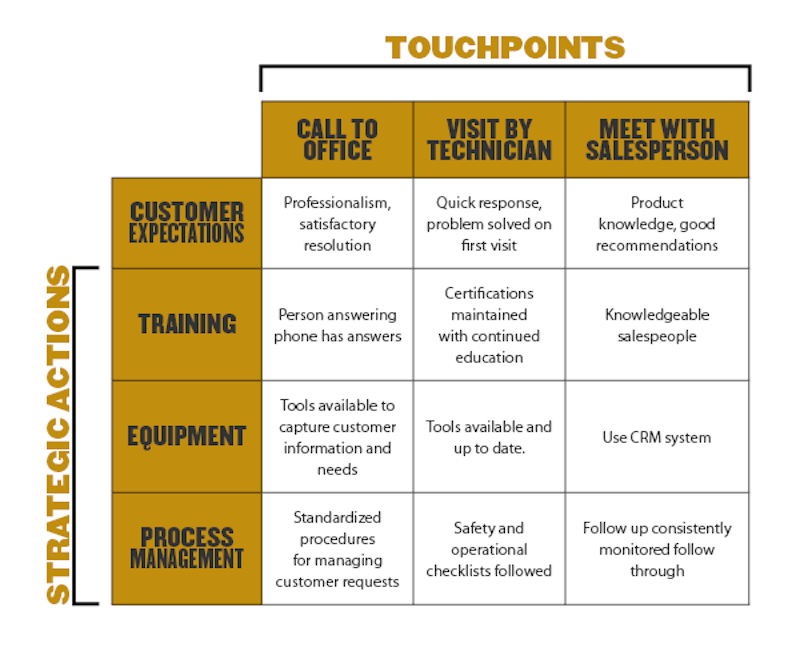Adapted from Scott Downey's article* in Purdue Food and Agribusiness Quarterly Review. Downey is Associate Director and Associate Professor at the Purdue Center for Food and Agricultural Business.
The concept of customer jouney mapping builds on touchpoints, and organizes the customer journey through these touchpoints in a three-part approach: preservice, service, and postservice. The major touchpoints from the customer perspective are mapped against the strategic efforts of the service provider that are required to create customer experiences at each touchpoint.
of the service provider that are required to create customer experiences at each touchpoint.
Customer journey mapping is a great tool for walking a mile in a customer’s shoes. Thinking through the ways in which customers engage with our organizations is a great exercise on its own. While it’s possible to go too far with this and identify every little potential motion or perception a customer has, starting with the main ones makes sense.
But just making the list only taps part of the value of this tool. The touchpoints are the starting point for conversations with customers. Finding out how many customers recall interacting with the touchpoint, what they want from those interactions, and then getting some indication from them on quality of the interaction at each touchpoint helps to prioritize which of the touchpoints warrant the most management effort.
Then, identifying the strategic initiatives we have in place to support our efforts with the touchpoints and looking at the purpose of each of those efforts with regard to the most critical touchpoints helps us identify which specific actions managers should focus on.
A company I worked for called these the “mission critical” points in the service process. Understanding these can be the difference for a successful image with customers.
The map looks a little like this:

*Article source: Rosenbaum, M. S., Mauricio Losada Otalora, and Germán Contreras Ramírez. (2017). “How to create a realistic customer journey map.” Business Horizons. 60(1). 143-150.




Post a comment
Report Abusive Comment